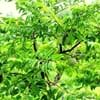Life Span
Perennial
Perennial
Origin
Mexico, Central America, South America
Europe, Eastern Europe, Northern Europe, Southern Europe, Western Europe, Russia, Siberia
Types
Not Available
not available
Habitat
Coastal Regions
damp meadows, ditches, Fields, Hay fields, shores, springs, Swamps
USDA Hardiness Zone
11-15
3-7
Sunset Zone
A1, A2, A3, H1, H2, 1a, 1b, 2a, 2b, 3a, 3b, 4, 5, 6, 7, 8, 9, 10, 11, 12, 13, 14, 15, 16, 17, 18, 19, 20, 21, 22, 23, 24
1a, 1b, 2a, 2b, 3a, 3b, 4, 5, 6, 7, 14, 15, 16, 17
Habit
Upright/Erect
Rosette/Stemless
Flower Color
Yellow
White, Pink, Light Pink, Rose
Flower Color Modifier
Bicolor
Bicolor
Fruit Color
Red
Purple, Bronze, Brown
Leaf Color in Spring
Green, Dark Green
Green
Leaf Color in Summer
Green, Dark Green
Dark Green
Leaf Color in Fall
Green, Dark Green
Dark Green
Leaf Color in Winter
Green, Dark Green
Light Green
Leaf Shape
Ovate
Long linear and narrow
Plant Season
Spring, Summer, Fall
Spring, Summer
Sunlight
Full Sun
Full Sun, Partial Sun
Type of Soil
Loam, Sand
Clay, Loam, Sand
The pH of Soil
Neutral
Acidic, Neutral, Alkaline
Soil Drainage
Well drained
Average
Bloom Time
Indeterminate
Late Spring, Early Summer
Tolerances
Drought
Drought
Where to Plant?
Container, Ground
Container, Ground, Pot
How to Plant?
Grafting, Seedlings
Divison, Seedlings
Plant Maintenance
Medium
Low
Watering Requirements
Needs more water during establishment
Water daily during growing season
In Summer
Lots of watering
Lots of watering
In Spring
Moderate
Moderate
In Winter
Average Water
Average Water
Soil pH
Neutral
Acidic, Neutral, Alkaline
Soil Type
Loam, Sand
Clay, Loam, Sand
Soil Drainage Capacity
Well drained
Average
Sun Exposure
Full Sun
Full Sun, Partial Sun
Pruning
Pinch or prune as they grow to promote branching and bushiness
Remove deadheads
Fertilizers
14-14-14 Fertilizer, Compost
All-Purpose Liquid Fertilizer, Fertilize in early spring, Fertilize the soil before planting, organic fertlizers, slow-release fertilizers
Pests and Diseases
Anthracnose, Aphids, Red blotch, Rust
Healthy tree
Plant Tolerance
Heat Tolerance, Salt and Soil Compaction
Drought
Flower Petal Number
Single
Single
Fragrant Bark/Stem
Yes
No
Foliage Texture
Medium
Medium
Foliage Sheen
Matte
Glossy
Attracts
Aphids, Not Available, Squirrels
Bees, Bumblebees, Butterflies, Hoverflies, Insects
Allergy
Stomach pain, Vomiting
allergic reaction
Aesthetic Uses
Used in parkland
Showy Purposes
Beauty Benefits
Anti-ageing, Blackheads, Reduce Bruises
Skin irritation, Skin Problems
Environmental Uses
Shadow Tree, Soil protection
Air purification
Medicinal Uses
Dehydration, Diabetes, Diarrhea, Nutrients, Weight loss
Not Available
Part of Plant Used
Fruits
Whole plant
Other Uses
Application in Handicrafts, Food for animals, Showy Purposes
Oil is used in perfume, soaps, creams, etc., Used as Ornamental plant
Used As Indoor Plant
No
No
Used As Outdoor Plant
Yes
Yes
Garden Design
Edible, Herb, Vegetable
Bog Garden, Wildflower
Botanical Name
Manilkara zapota
LYCHNIS flos-cuculi
Common Name
sapodilla , chikoo, Sapota
Ragged Robin
In Hindi
चीकू
Ragged Robin
In German
Breiapfelbaum
Kuckucks-Lichtnelke
In French
Sapotillier
Ragged Robin
In Spanish
chicle
petirrojo desigual
In Greek
sapodilla
ragged Robin
In Portuguese
sapodilla
Ragged Robin
In Polish
Pigwica właściwa, sapodilla
Ragged Robin
In Latin
sapodilla
Robin ragged
Phylum
Magnoliophyta
Anthophyta
Class
Magnoliopsida
Equisetopsida
Order
Ericales
Caryophyllales
Family
Sapotaceae
Caryophyllaceae
Clade
Angiosperms, Asterids, Eudicots
Angiosperms, Core eudicots, Eudicots
Tribe
Sapoteae
Not Available
Subfamily
Sapotoideae
Not Available
Number of Species
Not Available
Importance of Sapodilla and Ragged Robin
Want to have the most appropriate plant for your garden? You might want to know the importance of Sapodilla and Ragged Robin. Basically, these two plants vary in many aspects. Compare Sapodilla and Ragged Robin as they differ in many characteristics such as their life, care, benefits, facts, etc. Every gardener must at least have the slightest clue about the plants he wants to plant in his garden. Compare their benefits, which differ in many ways like facts and uses. The medicinal use of Sapodilla is Dehydration, Diabetes, Diarrhea, Nutrients and Weight loss whereas of Ragged Robin is Not Available. Sapodilla has beauty benefits as follows: Anti-ageing, Blackheads and Reduce Bruises while Ragged Robin has beauty benefits as follows: Anti-ageing, Blackheads and Reduce Bruises.
Compare Facts of Sapodilla vs Ragged Robin
How to choose the best garden plant for your garden depending upon its facts? Here garden plant comparison will help you to solve this query. Compare the facts of Sapodilla vs Ragged Robin and know which one to choose. As garden plants have benefits and other uses, allergy is also a major drawback of plants for some people. Allergic reactions of Sapodilla are Stomach pain and Vomiting whereas of Ragged Robin have allergic reaction respectively. Having a fruit bearing plant in your garden can be a plus point of your garden. Sapodilla has showy fruits and Ragged Robin has showy fruits. Also Sapodilla is not flowering and Ragged Robin is flowering. You can compare Sapodilla and Ragged Robin facts and facts of other plants too.





